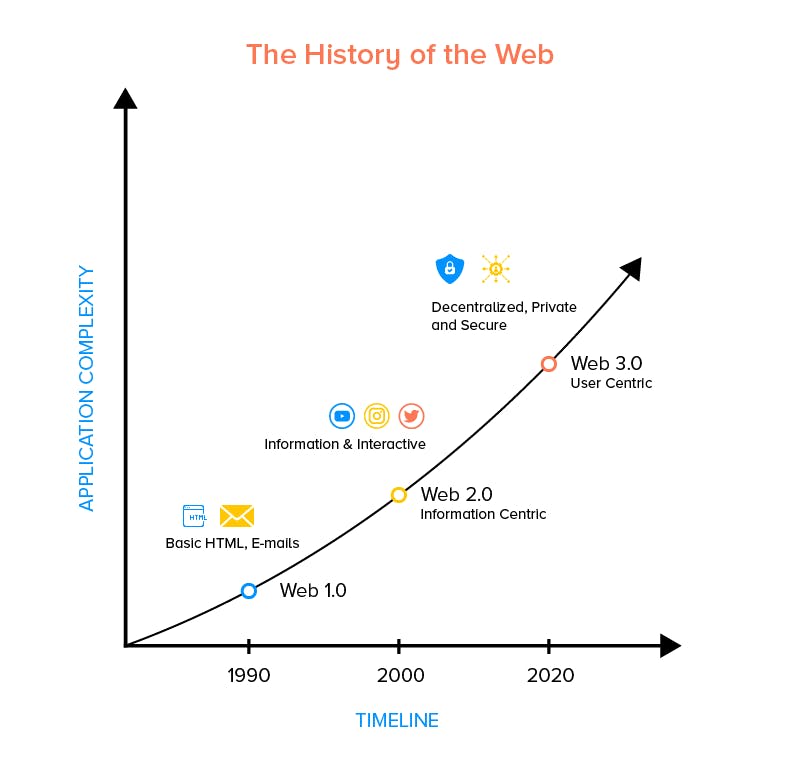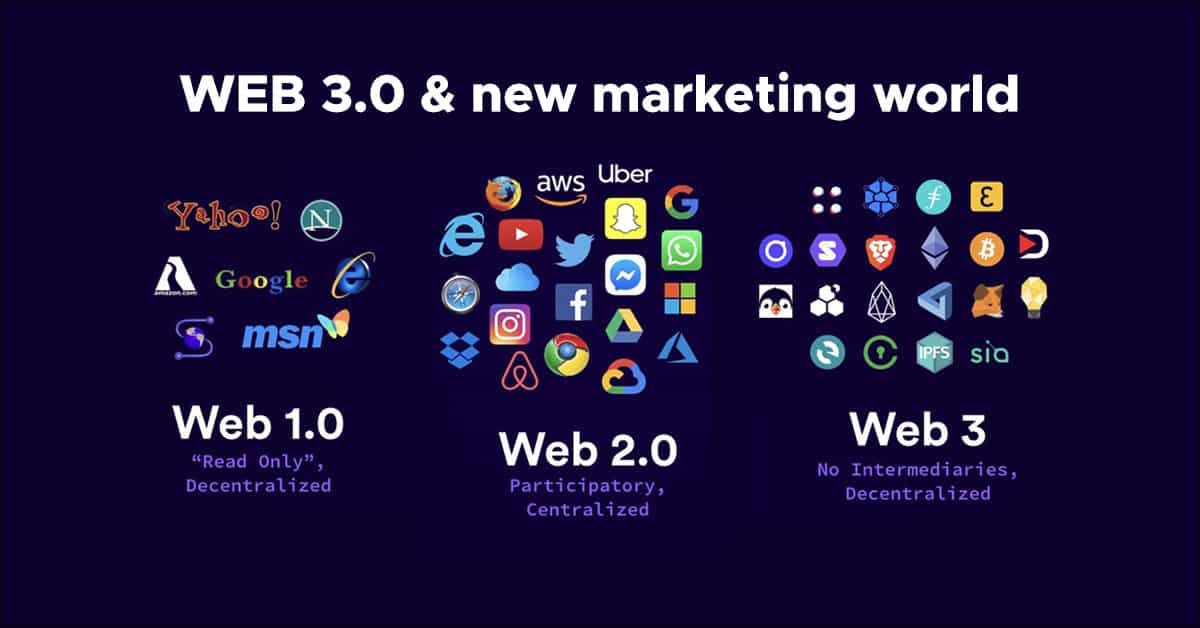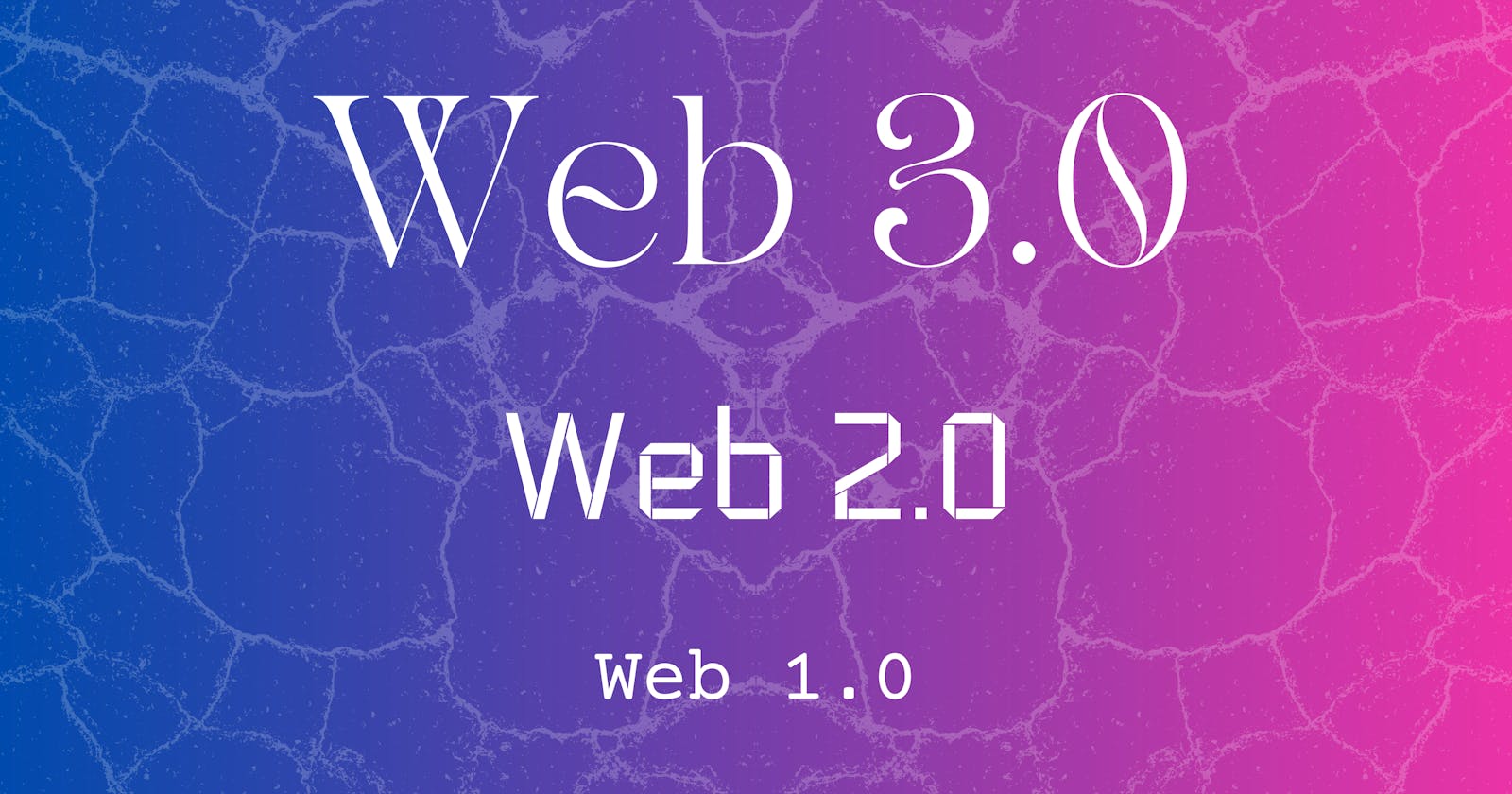Table of contents
TL;DR: Web 1.0 is static and has one-way traffic, Web 2.0 is centralized, dynamic and participative, and Web 3.0 is decentralized and immersive. But worths reading :)
Introduction
The Web is used in reference to the World Wide Web (WWW) which is the core information retrieval system of the internet. The term "World Wide Web" was coined by the internet pioneer Tim Berners-Lee.
It is not surprising that the Web has been evolving continuously. So, it is not possible to distinguish the phases of the Web by precise dates or events. This entry aims to provide an outlook to the evolution of the Web.
Let's see if we really know about some of the fundamental steps of the Web evolution throughout years!

Web 1.0
Not much time ago!
"Web 1.0" is used for the first stage of the World Wide Web evolution. In this era, content creators were significantly outnumbered by the huge majority of users who were content consumers. Most of these contents were placed on static pages (e.g., personal web pages). Although the time period for each era does not have crystal clear start and end points, it can be estimated that Web 1.0 was roughly from 1991 to 2004.
Three common characteristics of a Web 1.0 site include:
- Static pages.
- Content is served from the server’s file system.
- Positioning and alignment the elements on a page is done through use of frames and tables.
Web 2.0
It is the current version of the internet!
Although the term was coined by Darcy DiNucci in 1999, it was not much famous until the Web 2.0 Summit (a.k.a. Web 2.0 Conference) held in 2004 and led by Tim O’Reilly and Dale Dougherty.

This is a snippet from the blog entry by Tim O'Reilly dating back to 2005. The examples are interesting and it really is more interesting how some are still much relevant while some are not off the shelves anymore. See more at: oreilly.com/pub/a/web2/archive/what-is-web-..
The bland webpages of Web 1.0 were replaced by Web 2.0 webpages where the focus was on
- Interactivity,
- Social connectivity,
- User-generated content.
The growth of Web 2.0 has been spurred by technological advancements like mobile internet access, social networks, and smartphones.
Web 2.0 is definitely more participative and dynamic which allows frequent interactions and therefore more social environment. By the courtesy of Web 2.0, user-generated content can be viewed instantly by millions of internet users from all over the globe. Social media platforms are notable constituents of Web 2.0 and allow their users share (in other words create) content so easily and interact other users by numerous means. In Web 2.0, users are both content generators and consumers.
In this sense, it would not be a far-fetched claim to say that Web 2.0 is the enhanced version of its pioneer, Web 1.0, through continuous iteration.

Couldn't find a higher resolution version but this visual summarizes the fundamental difference between Web 1.0 and Web 2.0.
Web 3.0
Wow! Web 3.0!!! But wait, what is it?
Its definition is varying from a source to another but most have some features in common:
Decentralization: In Web 2.0, HyperText Transfer Protocol (HTTP) is used in the form of unique web addresses to find information stored at a fixed location. However, Web 3.0 includes alternation of the Web into a database through the integration of distributed ledger technology. Web 3.0 platforms run on blockchains and information can be stored in multiple locations simultaneously in Web 3.0. Hence it becomes decentralized. This change may put the database operations of Meta, Amazon, and Google at stake by granting greater control to individual users.
Trustless and permissionless: Decentralization comes with being trustless and permissionless. As the users can interact without a mediation of a trusted intermediary, Web 3.0 may be called trustless. It is also permissionless since anyone can participate networks without any authorization from a governing body.
Connectivity and ubiquity: Web 3.0 information and content are more connected and ubiquitous. They can be accessed by multiple applications through an increasing number of devices day by day.
Artificial Intelligence and Semantic Web: Web 3.0 has smart applications powered by artificial intelligence. Web 3.0 can also understand the meaning of words which refers to the Semantic Web functionality. It allows information to be found, shared, or analyzed at an easier manner.
Apart from the above features, while Web 2.0 had a major focus on the front end, the focus of Web 3.0 is heavily on the back end.
Too much explanation? Just check the three examples below taken from ethereum.org to better comprehend the points of differentiation of Web 2.0 and Web 3.0:

Summary
A brief and interesting explanation of these three phases of the Web is given by Tim Berner-Lee, the founder of the World Wide Web:
- Web 1.0 is the readable phase of the Web. --> Very limited interaction between users, the traffic is usually one-way.
- Web 2.0 is the writable phase of the Web. --> Users can interact with the site and each other.
- Web 3.0 is the executable phase of the Web. --> Through new technologies, computers can interpret information like human and generate personalized content.

Although I can see where the indication "decentralized" for Web 1.0 is coming from in the below visual, I do not agree. I am sharing this visual to show pioneering brands and tools of each Web era for better comprehension.

What is Next?
While Web 3.0 has not reached to its maturity yet, murmurs about Web 4.0 are being heard. Please do not forget that the transformation of the Web is a continuous process, not a step function and this article aims to provide a general sense about the different phases of the Web by highlighting their points of differential.
So, let's care less about tagging the phases with precise start and end dates, and worrying about the next step, instead understand and cherish the phase we are going through.

